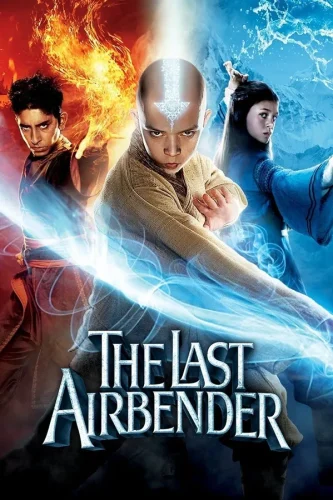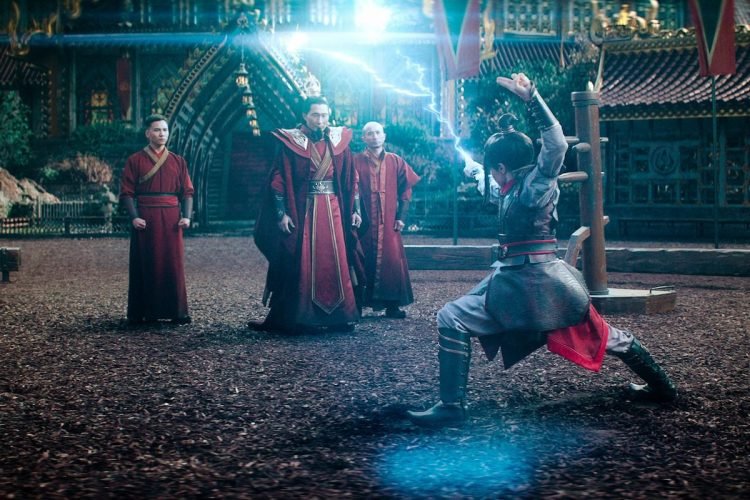Our Review Of Netflix’s ‘Avatar: The Last Airbender’
Has the Ember Island curse finally been broken? Spoilers ahead for the Netflix adaptation and original Nickelodeon animated series of Avatar: The Last Airbender.
Live-action adaptations of animated shows have historically been hit-or-miss – and let’s face it, there have been more misses than hits in recent years. With the M. Night Shyamalan disaster of 2010 sitting heavy in our minds and hearts, many die-hard fans of Nickelodeon’s Avatar: The Last Airbender therefore the new Netflix live-action series with trepidation. But friends, we’re happy to say that we were pleasantly surprised by the adaptation – and yes, the effects were decent.
For anyone who missed out on the original animated series and hasn’t yet had a chance to watch the Netflix show, Avatar: The Last Airbender takes place in a world divided into four nations, each representing one of the four elements: Water, Earth, Fire, and Air. Benders can manipulate the elements, but only the Avatar can master all four. He or she is responsible for maintaining balance in the world. The series follows the story of Aang, the Avatar, who is not only the last Airbender but has not yet learned how to use any of the other three elements. The Fire Nation, led by Fire Lord Ozai, has taken over the world, and Aang must master all elements to defeat the Fire Nation and restore peace.

The original Nickelodeon animated series aired in 2005 and ran for three seasons. It received huge acclaim for its story, animation, character development, innovation, and voice actors. It’s a fun, creative, emotionally mature show that succeeds in appealing to children and adults alike. It allows its characters to grow, make mistakes, and learn how to overcome adversity. A show that starts out goofy and playful, it gradually introduces darker, more adult themes as its characters are forced to grow up and confront the harsh reality of their world. That said, it never loses its joy or optimism. It’s a truly beautiful show that benefits from the scope and creativity allowed by animation.

Fans of the show will remember one of the best episodes in season 3, “The Ember Island Players”, in which our characters attend a play about themselves held in a Fire Nation town. They are horrified and disgusted by how they were portrayed on stage, not to mention how their story is changed and misrepresented. The only positive thing they can say is, “Well, at least the effects were decent.”

Rumors of the Ember Island curse began with The Last Airbender by M. Night Shyamalan. This disastrous movie adaptation of 2010 received a shocking but completely deserved 5% critic rating on Rotten Tomatoes. Not only did it fail to capture the heart of the show, it was also an example of painfully poor pacing, storytelling, and character portrayal. The bending was pitiful, the casting choices questionable, and the mispronunciation of names abominable. In the words of critic Perri Nemiroff, “Shyamalan takes the beloved source material, strips the characters of all emotion, throws in intrusive narration, douses it in CGI, and tries to pass it off as a viable effort.”

This movie is probably best forgotten but we mention it as important background to many fans’ attitudes to the Netflix adaptation. We had every reason to be wary. And given how difficult it can be to translate animation into live action, even with good CGI, it may be fairer to compare the new series to the movie rather than the original show. But action sequences aren’t everything; a good adaptation must also deliver a show’s essence. So here are our thoughts on the Netflix series (we’ve kept spoilers to a minimum).

What They Got Right
With regard to the overall story, Netflix did a pretty good job condensing the original twenty episodes into eight. No adaptation is going to be perfect, and we will always miss some elements that are lost in translation. Netflix trimmed some plot lines and characters but overall they delivered a smooth, coherent story that got our characters where they needed to be.
The casting worked well overall and some portrayals were close to perfect. Azula, Mai, and Ty Lee, in particular, owned their scenes and we’re excited to see more of them. Suki was also pitch-perfect, striking the balance between the fierce, independent warrior and the inexperienced girl. Sokka and Katara worked well as siblings and captured their squabbling, fiercely protective bond.

We joked about it before but honestly, the effects were good. Netflix certainly put Shyamalan even more to shame, producing some impressive bending that got more elaborate and powerful as the characters developed their skills and faced more intimidating adversaries. They took some liberties (cough, flying Fire Nation soldiers, cough) but overall they did a decent job.

What They Got Wrong
The beginning. The original series starts with Katara and Sokka meeting Aang and fills in prior events gradually using flashbacks. Unburdened by the knowledge of what happened to the other Airbenders 100 years ago, Aang’s carefree, playful nature feels natural. When he learns of the horrible events that followed his departure from the temple, his mourning and self-recrimination feel natural and present an opportunity for character growth. The audience is with him on this journey, allowing us to feel connected to him and the other characters from the outset.

In the Netflix series, the first episode begins at the Southern Air Temple. The audience is introduced to characters we will never meet again and witness some frankly horrible scenes as the Fire Nation attack. When we jump forward to meet Aang with Katara and Sokka, his upbeat mood suddenly feels jarring. Instead of feeling connected to him, the audience is put in the uncomfortable position of knowing more than him, making it difficult to relate to him in those crucial first moments at the Southern Water Tribe.
The opening sequence of the Netflix show also diverged from the original opening sequence. Narrated by Avatar Kyoshi, the script sounds like a student rewriting a reference article so they can’t be accused of copying. To make matters worse, Katara and Sokka’s grandmother then delivers the original script later in the episode, essentially explaining the show’s backstory twice. This was a misstep on Netflix’s part. Instead of taking the opportunity to make old fans feel at home with the new show, it wrong-footed us with a poor version of a truly iconic part of the show.
One of the most frustrating changes Netflix made will sound small to anyone who hasn’t seen the original show, but here it is: they show Ozai’s face. Fire Lord Ozai – evil, terrifying, and brutal – haunts the early seasons of Avatar: The Last Airbender as a shadowy, faceless form. Always shown in silhouette or with only the cruel curve of his smile visible, the fear of the unknown increased our fear of Ozai exponentially. No matter how good an actor is – and Daniel Dae Kim who plays Netflix’s Ozai is a great actor – they cannot capture the powerful malevolence of the unseen Ozai. I think Netflix missed a huge opportunity on this score.

To Sum Up...
It’s hard not to be critical of an adaptation of a show as beloved as Avatar: The Last Airbender. Despite some issues with the Netflix version, overall it respected the original show and told the story well. For anyone who hasn’t seen either the original or the latest series, we would recommend watching the animated show first. Even with the filler episodes along the way, it tells a powerful story and it tells it well. Netflix has done a good enough job and we’ll more than likely watch season 2 when it comes out, but the new adaptation certainly can’t compete with the original.

On Another Note
In other exciting news, a trilogy of animated movie sequels to the original Avatar: The Last Airbender is reportedly in production. The movies will bridge the gap between the end of the original series and the events of The Legend of Korra, the show that centered on the next Avatar after Aang. Bryan Konietzko and Michael DiMartino, co-creators of the Nickelodeon series, are producing the movies, the first of which will be directed by Lauren Montgomery, who worked as a storyboard artist and supervising producer on the original Avatar series and The Legend of Korra. The first movie was set for release in October 2025 but has been pushed back until January 2026. No details about the plot have been released, but we’ll be keeping our ears close to the ground on this one, so stay tuned.
What are your thoughts on the Netflix’s adaptation of Avatar: The Last Airbender? Are you a fan of the original show, or still thinking about dipping your toe? Let us know in the comments below. And don’t forget to sign up to our email list to get Finds of the Week and our free newsletter, PopPulse Digest, delivered straight to your inbox each and every week.
CHECK OUT THE CAPITAL CITY SELECTIONS DEALS PAGE FOR YOUR TOP FINDS!
This article contains links to external sellers and affiliate marketing. As Amazon Associates, we earn from qualifying sales.
More Stories
Daredevil Born Again: A Return to Form on Disney+
Article SummaryDaredevil: Born Again delivers on the original series' gritty tone with strong writing and exciting plot twists.The show introduces...
A Look at What Happened Before Daredevil: Born Again
Article SummaryExplore key character arcs: Review what happened to Matt Murdock, Karen Page, Foggy Nelson, and other main characters before...
Why The Office Deserves Its Place Among TV’s Greatest Sitcoms
Originally making waves as a British series, The Office crossed the Atlantic to inspire a new wave of innovative comedy...
Alien’s Ellen Ripley and the Female Action-Hero Archetype
The 1970s saw the birth of a different kind of action hero than one familiar to movie audiences: women. Before...
From Walter White To Heisenberg: When People Break Bad
Few movies or TV shows capture the essence of morally complex characters quite like Breaking Bad. Over the course of...
Deadpool & Wolverine Review: The Boys Are Back (Spoilers)
Marvel is back.On July 26th, Deadpool & Wolverine exploded onto the big screen with a bang, a whole lot of...


